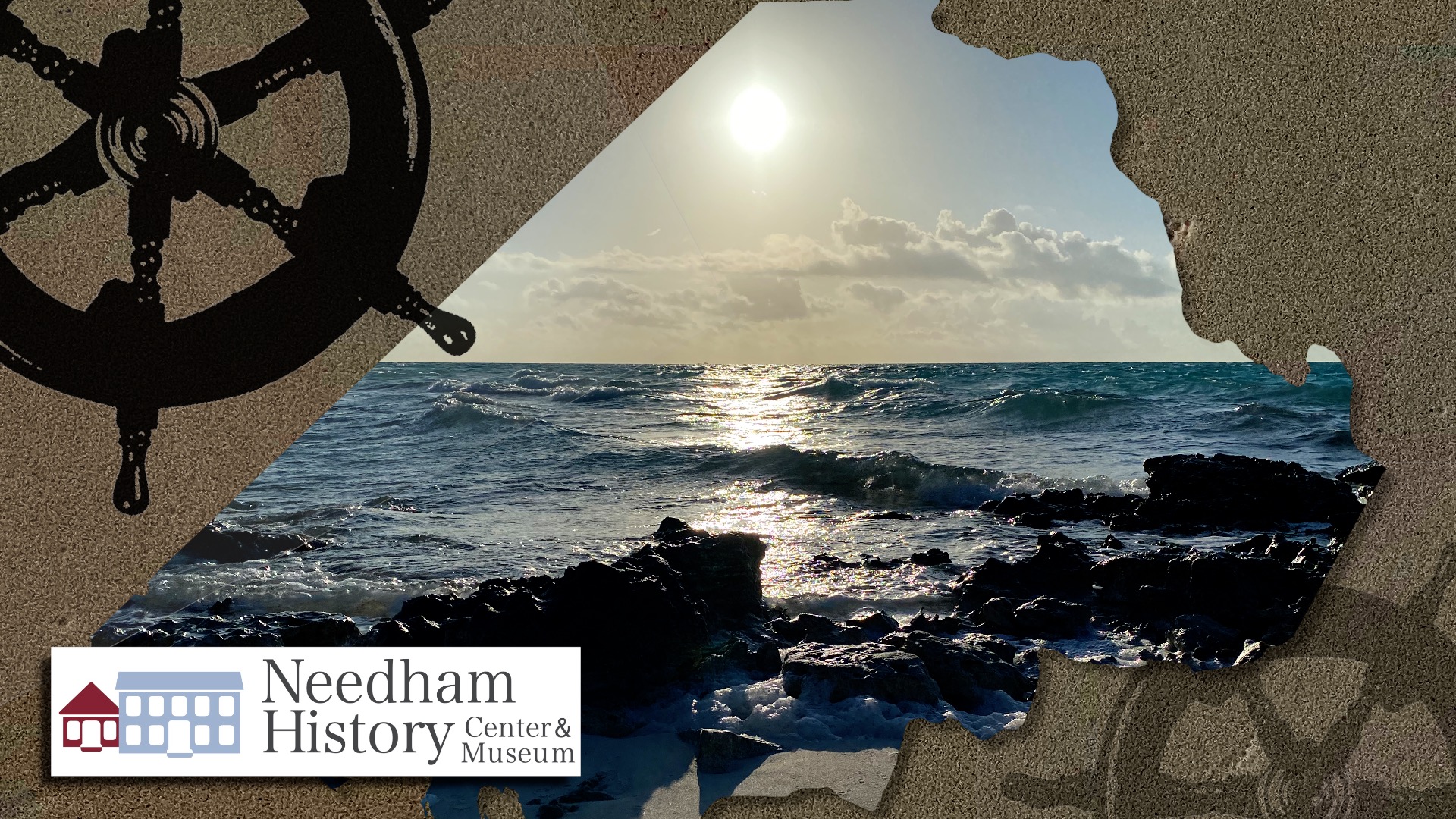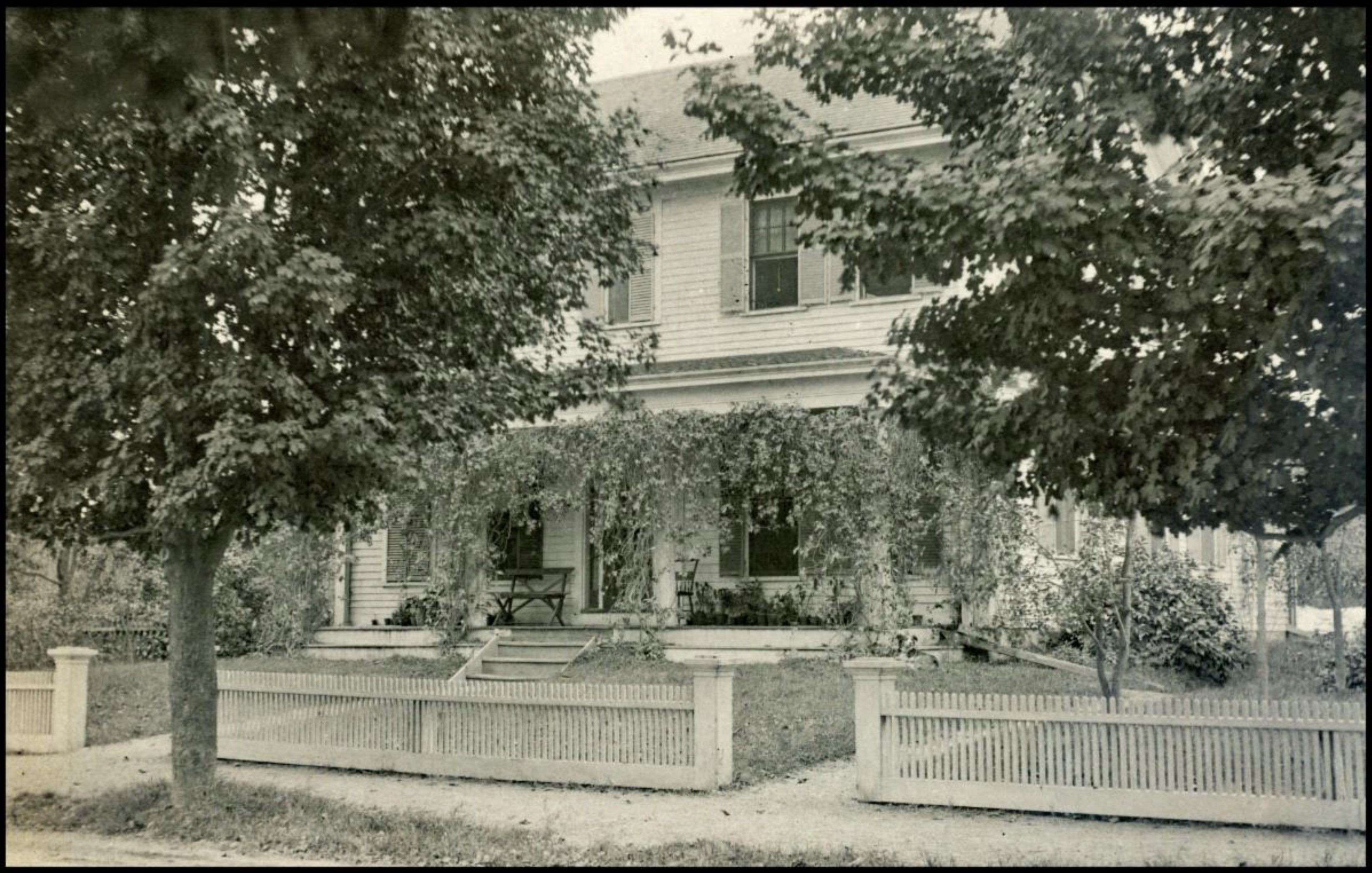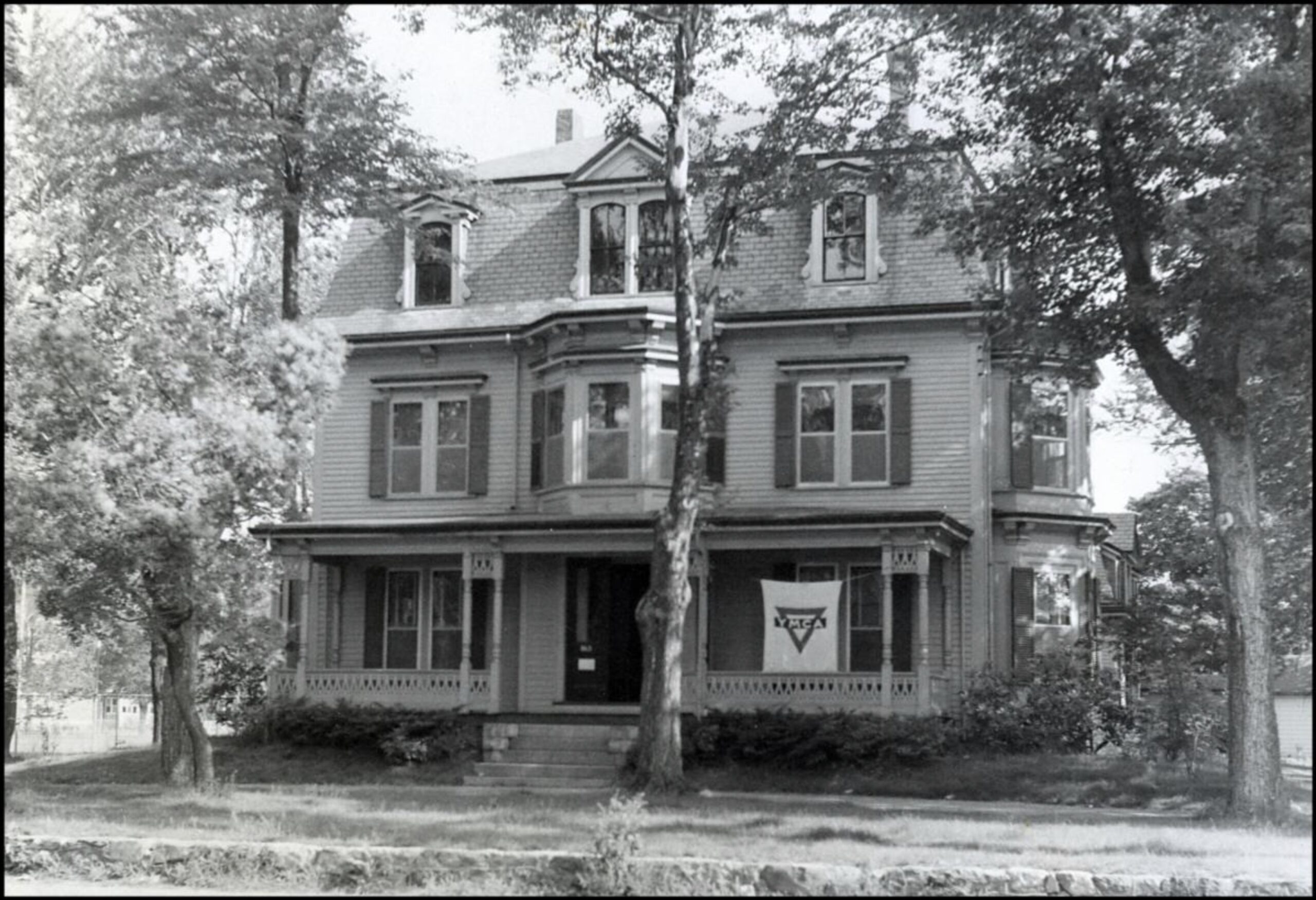
Needham History: Ahoy Mateys!
Exploring Needham’s rich maritime history

The house of Captain Gorham Burkett on Highland Avenue, now the site of Walgreen’s. At the time the house was built (1860s), the Great Plain was just beginning to grow as a residential area. By 1900, it became more o a retail hub, and homes like this one were rapidly replaced by storefronts.
Ahoy Mateys!
While there are many things I love about Needham, I have to admit that its rich maritime history is not the first thing to come to mind. Or even the tenth. That might be because Needham is, as you have probably noticed, landlocked.
Nevertheless, maritime things keep cropping up. I was doing some research into Seth Dewing (1788-1883) the other day because of a tin document box that had belonged to him, that was recently donated to us by the Weston Historical Society. How did the box end up in Weston? Seth Dewing was a carpenter. He lived all of his life in Needham, except for a brief sojourn in Charlestown. It seems that he did have some cousins in Weston, so maybe the box got given or left behind while visiting that town. But more intriguing –
When a young man [Dewing] learned the carpenter’s trade by a four years’ apprenticeship with Silas Fuller. In 1810 he went as a ship-carpenter on the ship Sally Ann, Capt. [Stephen] Glover, of Needham, to Liverpool, England; on the return voyage the weather was rough and tempestuous, causing the vessel to leak; she was also chased by a privateer for quite a distance. He worked at his trade in Needham and Newton (Upper and Lower Falls) until 1815, when he engaged in the West India goods trade at Grantville (now Wellesley Hills), acting as postmaster there… He also served the town of Needham in most of the minor offices…; he was one of the school committee for the Lower Falls district in 1822, and surveyor of lumber of the town continuously from 1844 to 1862 inclusive. (information from a family genealogy)
Captain Stephen Glover was the master of the merchant ship Sally Ann in the early years of the 1800s. The ship made the run between Boston and Liverpool, though it occasionally called in at other places, such as Malta. I cannot find a reference to Stephen Glover in Needham, though there are other Glovers in town in the late 1700s. I also note that Seth Dewing’s grandmother was a Glover, so the two men might have been related.
The fact that both Seth Dewing and Stephen Glover were merchant seamen out of Boston raises (for me, anyway) another possibility – I have long been baffled by how Portuguese sailor Antonio Courante made his way to Needham to meet and marry the daughter of landowner Joshua Lewis. Courante was also in the Boston merchant fleet in the same years as Glover and Dewing. It just might be (Might be. Maybe.) that one of them (or another sailor from Needham?) brought him home for a visit. That is pure speculation, but the only (OK, very tenuous) thread I have found so far.
Oddly enough, this is not Needham’s only connection to the Ocean Blue. In the mid-late 1800s there were not one, but TWO ship’s captains living in town – Capt. Gorham Burkett and Capt. Alpheus Boyd.
Gorham Burkett (1818-1904) was born in Waldboro, Maine, and moved to Needham in 1867. He purchased a house on Highland Avenue (now the location of Walgreen’s). He had three children, one of whom died as a child. His older daughter Gertrude married Needham grocer Charles Woodruff. His younger daughter, Nellie, never married, and clerked at Woodruff’s store.
Gorham Burkett was a merchant seaman. He first went to sea as a youngster, and rose to captain at a relatively young age. He worked mostly in the Pacific trade in the middle years of the century, sailing to China, India, Australia, and the Philippines. Merchant shipping to Asia became an important feature of the new American economy in the century following the Revolutionary War, mainly out of the ports of Boston and Salem. The trade dealt in high-value goods such as silk, porcelain, spices, and furs. This was also a way for the American market to circumvent the British East India Company’s monopoly on tea. Also, beginning in the 1820s, American merchants began importing Turkish opium into China in competition with the British opium trade from India.
I do not know whether Gorham Burkett was involved in the opium trade, but I do know that in 1857 he brought back for his daughters a Chinese lacquered sewing table. The table, which features delicate decorations in gold, is filled with ivory bobbins, thimbles, and other fittings. It is now on display as part of the collections of the Needham History Center. Burkett died in 1904 and is buried in Needham Cemetery.
A detail from the Chinese sewing table brought back by Capt. Burkett for his daughters, Gertrude and Nellie. The two women later donated the sewing table to the Needham History Center; it is currently on display.

Alpheus Packard Boyd (1826-1906) was also born in Wicassett, Maine, only a few miles from the place where Burkett was born. He came to Needham in 1879, first living in the former Washburn house on Nehoiden Street (now 301 Nehoiden), then building himself a house at 863 Great Plain Avenue (the old house that used to be the YMCA), and a double-house next door on the corner of Great Plain Avenue and Warren Street (still standing, 853/855 GPA) for two of his children.
As a young man, Boyd spent five years as a cabin boy, but in 1849 shipped out to San Francisco to try his luck in the Gold Rush. This life did not appeal to him, however, because as his obituary notes, “he was brought up in good Puritan ways.” Instead, he returned to the life he knew best – seafaring. Boyd’s father, Thomas Boyd, was a ship’s captain; Boyd’s wife, Susan Trufant Boyd, was a shipbuilder’s daughter. Alpheus Boyd started with a small boat to move cargo from larger ships to coastal landings, and later saved enough to buy his own sloop. He owned and/or captained a number of ships over the years, shipping various cargoes in and out of ports in Europe, China, California, South America, New Orleans, and the east coast. He became successful enough to invest in shipbuilding in Maine, as well as his own merchant vessels.
In Needham, Boyd served as tax assessor for a number of years, and he and his family were members of the First Parish. He died in 1906 and is buried in the Needham Cemetery.
The degree of coincidence in the lives of these two men is remarkable. They were born a few miles apart and ended up in the same trade, plying many of the same merchant routes. They moved to the same town and settled in houses just a couple of blocks apart. They died within two years of each other. I can’t help but assume that they knew each other – the population of Needham in 1880 was only about 5200 people. I can just see these two old salts, smoking their pipes by the fire and trading tall tales about pirates in the South Seas and hurricanes while rounding the Horn. Enjoying some welcome time of warmth and quiet after so many tumultuous years of adventure.
Alpheus Boyd’s house at 863 Great Plain Avenue. This was later the home and offices of Dr. David Mann, a longtime physician in town. The house was purchased by the YMCA around 1960, and demolished in 1998 when they built their current pool facility. The double house next door, at 853/855 Great Plain, was built by Capt.Boyd for two of his children and is still standing.

 |
Gloria Polizzotti Greis is the Executive Director of the Needham History Center & Museum. For more information, please see their website at www.needhamhistory.org. |

